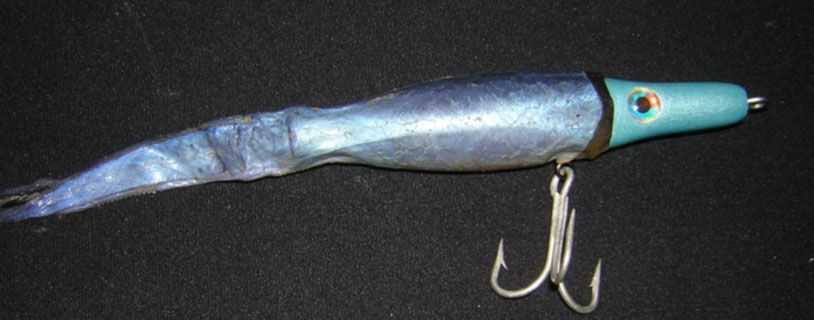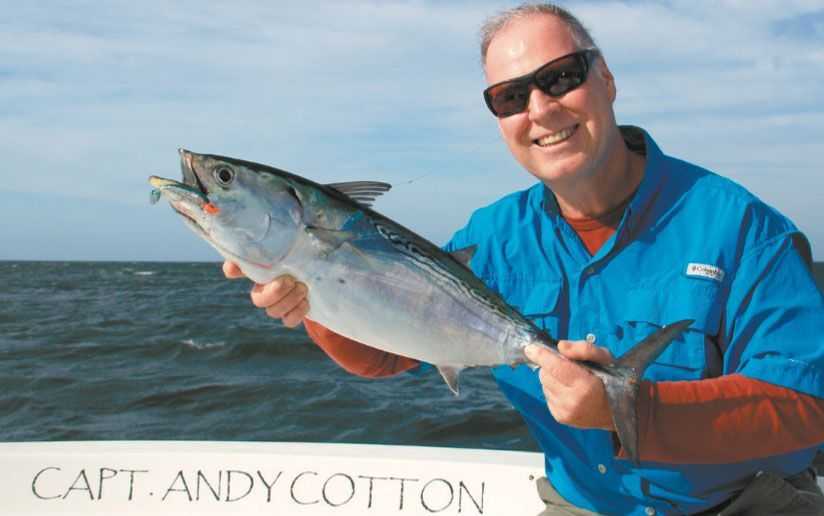
Striper season may still be months away, but already anglers at local tackle shops and shows are comparing notes and taking stock of last year’s successes and failures. One topic that seems to be trending in these conversations is how well stripers responded to anglers trying different lures and approaches last year.
STRIPER SOFT SPOT
“We really noticed an uptick in the scores of anglers using soft-plastic jerkbaits in 2015,” revealed Bryce Poyer at Whitewater Outfitters in Hampton Bays. “These lures are really versatile and anglers have been using them in a wide range of situations ranging from light-tackle back- bay encounters to working inlet rips with stout rods and bigger offerings.”
Indeed, soft, unweighted plastics did a number on the linesiders last year. They seemed to perform especially well worked just below the surface in protected waters where surface lures like Zara Spooks have recently ruled the roost. From East End pocket water to the West End harbors and State Channel passages, scores with schoolies to lunkers were quite impressive.
“The 7- to 10-inch sizes have been most popular,” noted Poyer. “With the smaller versions you can bury a worm hook and even fish through the weeds. With the larger soft baits, try a stout live-bait style hook. You can triple the life of larger baits (some measure 12 to 15 inches) by whipping them to the hook shank before adding a little glue to keep them locked in place. Slug-Gos and Hogys in white had the daytime edge while midnight smoke was the hot shot on the graveyard shift.”

NEEDLE ME THIS
Over on the North Shore, Mark McGowan at Cow Harbor Bait and Tackle in Northport said his regulars had a lot of success with stripers late last spring and through the summer and fall by rigging eel skins on needlefish plugs and Super Strike Little Neck poppers.
“For fishing around rocky areas and heavy structure, there’s just something about an eel skin plug that makes bass drop their guard,” explained McGowan. “We actually keep eel skins in stock here.”
If you are serious about trying eel-skin plugs, fork over $20 bucks and get the hand-made, wooden, Lemire needlefish. They have a special notch carved in the top to help hide the secure wire used to secure the eel skin and work especially well. The best sizes are 5- to 7-inch lures weighing 1-1/2 or 1-3/4 ounces. These are big enough to interest cow bass while still catching plenty of husky-shouldered schoolies – and they cast better than the traditional metal-lip swimmers that most anglers favor with eel skins.
“For this kind of fishing you’ll want the skin from a medium-sized eel (about 19”.) The skin is brined, trimmed, and flipped over the plug. After it’s wrapped with 30-lb. test wire, the front of the skin is folded back to completely hide the wire. With the skin in place, attach a single belly hook to the lure and you are ready to go. Late spring, early summer and the fall is when this combo works best.”
McGowan and crew like to work their eel skin needlefish very slowly with the rod-tip at a 45-degree angle to the water and barely a twitch imparting slight action on the retrieve. Work the lure though a sweep if possible, and keep it about a foot under the surface.
“If you need a little more weight to reach the fish, put an eel skin on a Super Strike darter, suggests McGowan. “Those weigh up to two ounces so it’s not a bad idea to carry one around when the wind kicks up or the fish are a long cast off the beach.”

HOOKING-UP IN PARADISE
You would be surprised how many readers ask me what tackle and lures they should bring when heading south for winter getaways. Fishing in the Sunshine state and tropical waters can be a blast – but it’s most fun if you keep things simple.
The less you carry when traveling these days, the better. Still, there are a few necessities you’ll want to have on hand. For starters, note that tropical and sub-tropical waters teem with toothy critters including barracuda, jack, mackerel and various shark species so bring wire leaders to limit cut- offs. A 10-inch length of size #2 wire leader (~20-lb. test) will defeat the dentures of most inshore predators while being light enough to not spook discerning species like grouper and snapper.
Shallow southern waters can also be crystal-clear during dry spells, which sometimes makes the fish quite warry. Use fluorocarbon leaders when targeting bonefish, permit, redfish, sea trout or other small-toothed, flats and tidal creek favorites. Fluorocarbon leaders virtually vanish in the water and greatly increase hook-up ratios.
Polarized sunglasses that wrap around the sides of your face for optimal glare reduction are another necessity. Since a lot of the action takes place on shallow flats, these will help you spot fish before they spot you. When looking for fish in knee-deep depths, watch for dark shadows moving across the bottom instead of trying to spot actual fish. A high sun makes spotting shadows easier so there’s little need for a daybreak start.
If heading to the Florida Keys, make time to fish the bridges (where allowed). The waters around them hold tarpon and snook. Novice anglers favor popular hot spots during the day – sharpies return after dark when bigger fish come out to play. Cast up-current or parallel to the shadow lines with bucktails, soft plastic shads, MirrOlures or Berkley Gulp! shrimp impaled on light leadheads. Try your luck on both tides before deciding any bridge is barren of fish.
While the Keys and East Coast inlets often make headlines, don’t leave your gear home if heading for the more relaxed atmosphere of the Gulf. Snook, redfish and sea trout may run larger on the Atlantic side, but the west side combines great numbers with respectable fish and lunkers are never out of the question.
How good is the Gulf Coast action? My last three trips to Florida’s Gulf Coast provided plenty of thrills. I smacked redfish in Estero Bay, pounded snook in Punta Gorda right from the seawall around The Fisherman’s Warf, and enjoyed super action with snook, snapper, reds and pompano in the passes of Sanibel and Captive islands. Sarasota also proved to be loaded with challenging false albacore and triple tail while Tampa Bay offered an all-out slugfest with reds, snook and jacks within view of the city. To find a well-vetted Gulf Coast guide, check out www.itrekkers.com.
[easy-social-share]